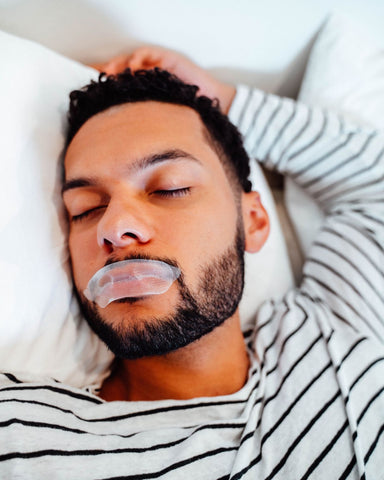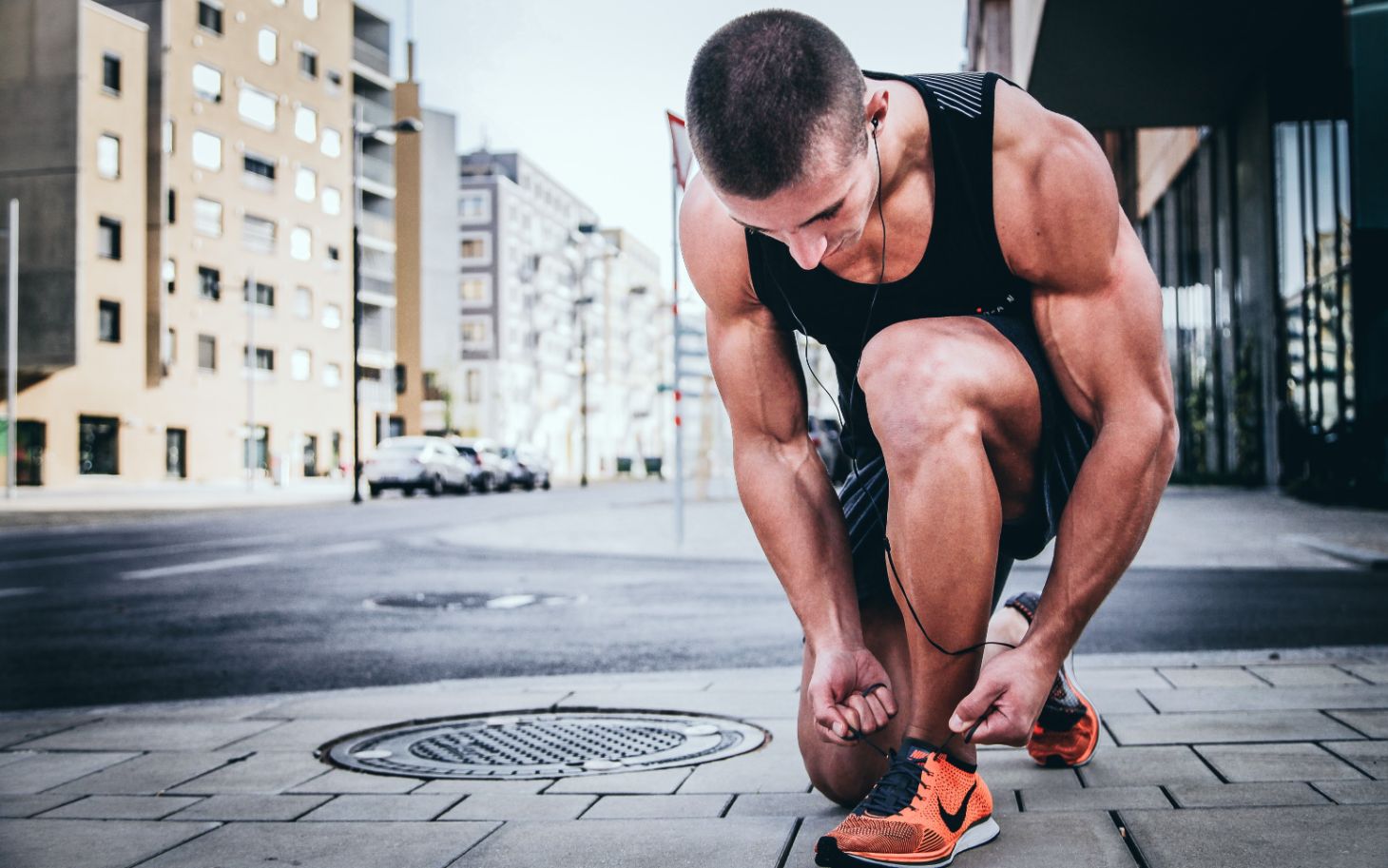It seems like there’s a hack for everything these days. Finding out which hacks are worth your time and which ones are gimmicks can be challenging.
With the rise of biohacking, it seems like there’s a new tip or trick to elevate every activity, especially when it comes to exercise. However, there is some truth behind the idea that there is a more efficient way to breathe while running.
Is it better to breathe through the nose or mouth when running? The answer can be found right on your face! It’s your nose.
Nasal Breathing vs Mouth Breathing
From birth, humans breathe through the nose. Newborn babies breathe in and out of their noses. It’s the way we were designed to breathe by default.
Our throats are configured to allow us to breathe and suckle at the same time, hence why babies do it. It’s part of our evolution and it helps us survive.
Beyond that, our noses also provide temperature control. The lungs have a harder time taking in hot or cold air, which is what happens when we breathe through the mouth. The nose, on the other hand, warms or cools the air as needed.
For that reason, breathing through your nose at all times (especially during a run in hot or cold weather) ensures that the lungs aren’t shocked by extreme temperatures. This makes the air easier to absorb.

The nose also boasts a filtering system, unlike the mouth. The small hairs, known as cilia, located within the nostrils remove dirt, debris, germs, and toxins from the air.
Furthermore, the nasal passages humidify the oxygen we breathe. This prevents dry mouth and sore throat.
By mouth breathing, you’re building an unconscious habit to go against the method of breathing that nature intended.
By nasal breathing during a run, you can take your fitness to the next level. But you might be wondering what science says about whether it’s better to breathe through the nose or mouth when running.
What the Research Says About Nasal Breathing While Running
One of the best benefits of training yourself to breathe through the nose over the mouth when running? It allows for more oxygen to reach active muscles and tissues. This is all thanks to nitric oxide, a miraculous molecule that helps to increase carbon dioxide (CO2).
When CO2 rises in the blood, oxygen can release. Mouth breathing, on the other hand, does not produce nitric oxide. Therefore, increased oxygenation is not possible.
When you mouth breathe, you’re essentially starving your cells of the proper amount of oxygen they need. That means quick fatigue and unnecessary stress on the body, lungs, and muscles.
Recent research shows this in action. Ten runners were tested over six months. Throughout that time, they utilized nasal breathing only while running.
The participants of this experiment were then tested while both nasal breathing and mouth breathing while running to compare their rates of maximum oxygen intake.

Additionally, their oxygen and carbon dioxide levels were monitored while they exercised. Their maximum oxygen intake did not change when comparing nasal breathing and mouth breathing.
However, respiratory rate, breaths per minute, and the ratio of oxygen to carbon dioxide output all decreased while nasal breathing as opposed to mouth breathing.
@somnifix Weird #WorkoutHack? Tape your mouth shut! Yes, we’re serious! 🏋️ #fitness #exercise #airwayhealth #mouthbreathers
♬ original sound - Somnifix
This can be attributed to the lower breath rate that nasal breathing allows. While it sounds counterproductive, this lower breathing rate is crucial to allowing more oxygen to enter the bloodstream.
This phenomenon is known as the Bohr effect.
A Closer Look at The Bohr Effect
As mentioned above, nitric oxide produced when nasal breathing simultaneously increases carbon dioxide and lowers the ratio of oxygen to carbon dioxide. Why is this important?
When CO2 rises, CO2 tolerance follows. Therefore, more CO2 is available within the body overall when nasal breathing, whether you’re pushing it hard on a run or sitting on the couch.

That means that the body can release oxygen with less effort, providing cells with the oxygen they need to operate at maximum efficiency.
When your cells are properly oxygenated, your heart doesn’t have to work as hard to keep things in circulation. As a result, you can run faster and harder for longer when breathing through the nose all thanks to the Bohr effect.
So how can you get started with putting this into practice?
How to Start Nasal Breathing While Running
Switching to nasal breathing from mouth breathing while running can be tricky, especially if you aren’t used to nasal breathing in general. When the intensity of your run picks up, it can be even harder to keep nasal breathing.
So how can you make the switch? By training through practice. Your lungs and airway work just like any muscle. The more you use them, the stronger they become.
Created by Patrick McKeown, The Oxygen Advantage is a leader in the nasal breathing and fitness space. They recommend switching to mouth breathing if your air hunger becomes intense while on a run.

However, to train your body to nasal breathe, The Oxygen Advantage recommends working to increase your Blood Oxygen Level Test (BOLT) score with breath-holding exercises.
To test it, inhale normally through the nose and exhale through the nose. Then, pinch the nose until you feel a strong urge to take another breath. Count the number of seconds between pinching the nose and your large hunger for air.
Finally, release the nose and return to breathing calmly in and out through the nose. Record your score and work to increase it.
A score under 20 seconds may mean that you have a blocked nose or that you aren’t acquainted with nasal breathing during daily life.
Increasing your score to as high as 40 seconds will help to take your athletic performance to the max.
Mouth tape may help you become acquainted with nasal breathing, especially during sleep.
How Mouth Tape Can Help
If you aren’t used to breathing through the nose rather than the mouth when running, it may be uncomfortable at first. That said, it’s the best way to breathe for optimal health.
And if you aren’t already nasal breathing during sleep, you aren’t getting the quality sleep you deserve. You’re probably snoring, waking up throughout the night, or waking up with a dry mouth.
Mouth tape ensures that the lips remain properly sealed so that oxygen enters the airway from the nostrils. To get started on your airway health journey, use mouth tape during sleep.

Then, focus on maintaining nasal breathing during waking hours. Finally, once your BOLT score improves, try popping on some mouth tape during your run.
Begin by wearing the strip for the first five minutes. Then, increase the time by five-minute intervals until you feel comfortable wearing the tape throughout your run.
That way, you won’t have to give nasal breathing a second thought while you’re running.
Now, you’re probably wondering, “will the Scotch tape I have lying around my house work?”
SomniFix: The Perfect Runner’s Mouth Tape
Before you tape your mouth with the same tape you wrap your Christmas presents with, consider that most tape contains harmful chemicals within the adhesive.
That means irritation, rashes, and all-around uncomfortable wear. SomniFix Mouth Strips are specially designed with your mouth, lips, and sensitive skin in mind.

They’re hypoallergenic and comfortable enough to wear during sleep and an intense run. Better yet, they include a mouth vent for emergency mouth breathing if you become winded.
If you want to improve the quality of your oxygen delivery while running, SomniFix Mouth Strips are the perfect tool. Pop on a Strip before your next run to begin training your way to efficient breathing.



